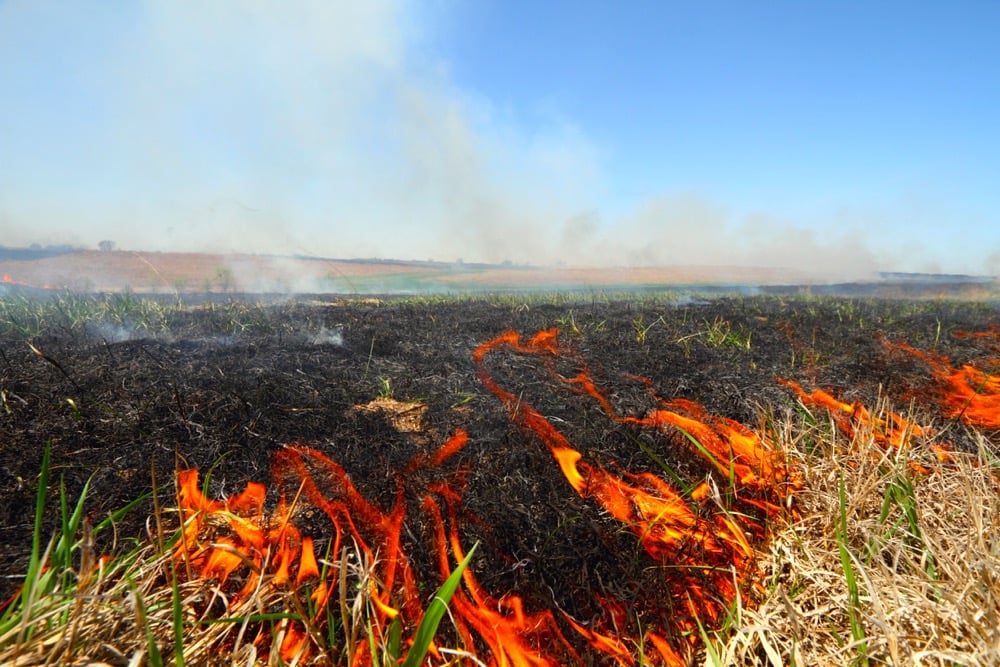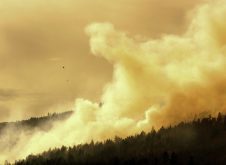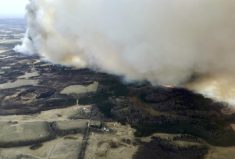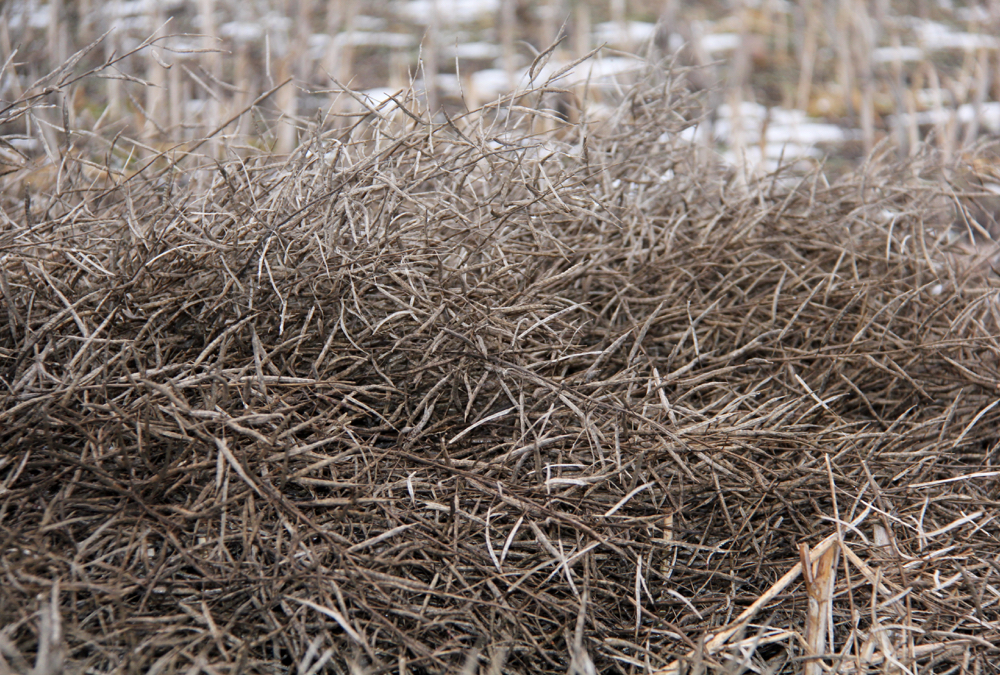For Clair Langlois, burning unharvested cereal crops this spring should be “a last resort.”

“It is quick, but it’s very risky,” said the provincial cereal extension specialist. “With Slave Lake followed by Fort McMurray, a lot of these municipalities are not tickled pink about burning.
“So you’ve got to have a Plan B ready to go in case you can’t burn or are delayed by a wet spring.”
And the first step to that is salvaging what you can, said Langlois, who spoke at a Battle River Research Group crop production meeting earlier this month.
“I would suggest combining if it’s got any value at all as a crop,” he said. “You should see how bad it is first before you give up on it. Just get out there and see. You might be pleasantly surprised.”
Read Also

Moo translator and methane measures: There’s an app for that
Dalhousie University researchers use artificial intelligence to create new dairy farm apps that analyze cattle sounds and measure methane.
A delay to spring seeding may be a concern, depending on how Mother Nature behaves over the next month, but Langlois suspects we’ll have a “normal” spring.
“As I get closer and closer to spring, it’s getting to be clear that we’re not going to have a March like we did last year. But it doesn’t look like we’re going to have a late spring, and that’s good news.”
If you time it right and choose some shorter-season crops, there should be “a window of opportunity” where you can combine while you wait for the soil to dry.
“I think we’re still going to be on time for April, but if it’s a late, tight spring — which it still could be — it’s going to be a whole new kettle of fish.”
Springtime combining
Fortunately, the snowfall this winter doesn’t seem set to break any records.
“It could have been a disaster for us, but we haven’t had four feet of snow sitting on top of these swaths or the standing wheat,” said Langlois. “As far as windrows go, the ones I’ve seen are nice and airy. It will dry faster than it could have had we had heavy snow.”
But if your crops are windrowed, “combining is going to be slow going.”
“The bottoms are going to be wet, and you’re not going to wait for the bottoms to dry out next to the cold ground. You’re going to get out there ahead of that,” he said.
“Normally you’d wait for the whole thing to be ready, but you’re just going to have to live with that as a problem.”
You might be tempted to flip it, but don’t.
“I wouldn’t touch it. You’re going to lose everything you have left if you do that.”
Instead, use crop lifters and get out into the field before the weather warms up, he said.
“If you can find a morning where it’s still frozen and you can float the combine before the ground gets mucky, that would be a good thing.”
High risk
If you do decide to burn what’s left of your crop, talk to your insurance agent first.
“Before you decide to burn your field or destroy it — anything that’s not collecting it and taking it into the elevators — you should get a hold of your insurance guy,” said Langlois.
“You don’t want to lose out on insurance unnecessarily just because you didn’t ask for it first.”
And then you’re going to need a permit.
“Any burning between March 1 and October 31 in Alberta requires a permit,” said Langlois, adding some counties require year-round permits and those in a forest protection area will need to visit their local forestry office, too. If you haven’t done so already, have those discussions right away, he said.
Even with a permit, you’ll need to follow all the provincial and municipal regulations for burning. At a bare minimum, “supervision is a must,” as is a fire guard of cleared soil, and burning at night or on windy days are no-nos.
“For the few fires that got away from us in the Peace region, 90 per cent of the time it was because it got windy on them,” said Langlois. “So listen to the weather reports. We make fun of the forecasts, but the one thing they’re really good at doing is the wind forecast.”
Depending on how spring goes, you may have a “very narrow window” to get it done, he added.
“Last year in the Peace region, it went from being dry enough to burn to them putting a ban on in only 10 days. That permit is useless once they declare a fire ban,” said Langlois. “If the day comes where they pull the cork and they say no burning, you can get seriously charged if you light a match after that’s been declared. You have to be on the ball.”
It’s for those reasons (and more) that Langlois cautions against burning if you have another option.
“We lost homes to fire in the B.C. Peace last year, and most of it was from fires getting away. This is a serious problem. You can’t take it lightly.”















